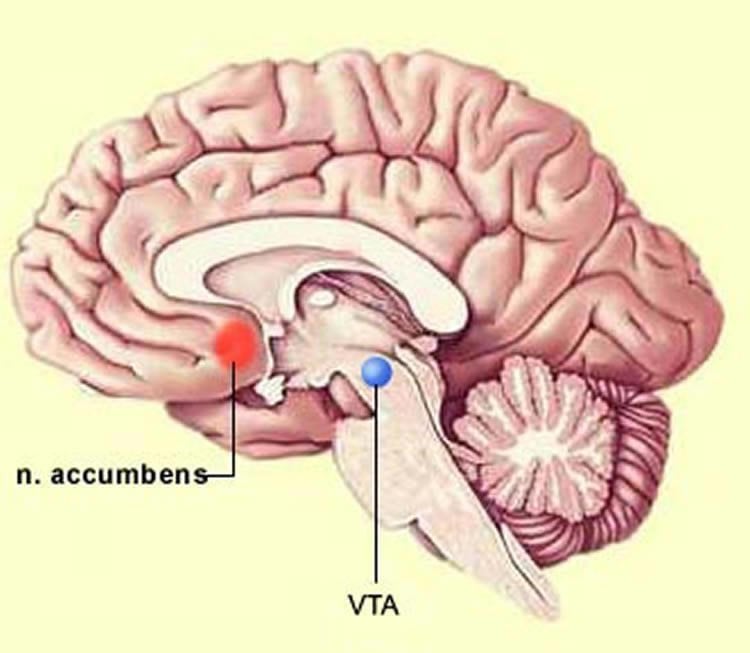Summary: Researchers shed light on the role dopamine neurons play in assigning values to transient environmental cues that drive behaviors.
Source: University of Minnesota Medical School.
Do dopamine neurons have a role in causing cues in our environment to acquire value? And, if so, do different groups of dopamine neurons serve different functions within this process?
Those are the questions researchers at the University of Minnesota Medical School are looking to answer.
Recent research published in Nature Neuroscience by University of Minnesota Medical School neuroscientist Benjamin Saunders, PhD, uses a Pavlovian model of conditioning to see if turning on a light – a simple cue – just before dopamine neurons were activated could motivate action. The classic Pavlov model combined the ringing of a bell with providing a tasty steak to a dog that, over time, conditioned a dog to drool when the bell rang with or without a steak. In this research, however, there was no “real” reward like food or water, in order to allow researchers to isolate the function of dopamine neuron activity.
“We wanted to know if dopamine neurons are actually directly responsible for assigning a value to these transient environmental cues, like signs,” said Saunders, who conducted some of his research as a postdoctoral fellow in the laboratory of Patricia Janak, PhD, at Johns Hopkins University.
Dopamine neurons, those cells in the brain that turn on when experiencing a reward. They are also the neurons that degenerate in Parkinson’s disease.
“We learned that dopamine neurons are one way our brains give the cues around us meaning,” said Saunders. “The activity of dopamine neurons alone – even in the absence of food, drugs, or other innately rewarding substances – can imbue cues with value, giving them the ability to motivate actions.”
To answer the second core question, the researchers targeted specific segments of dopamine neurons – those located in the substantial nigra (SNc) and those located in the ventral tegmental area (VTA). These two types of neurons have historically been studied in different disease research fields – SNc neurons in Parkinson’s disease, and VTA neurons in addiction studies.
Scientists learned that cues predicting activation of the two types of neurons drove very different responses – those predicting the SNc neurons led to a sort of “get up and go” response of invigorated rapid movement. The cue predicting VTA neuron activation, however, became enticing on it own, driving approach to the cue’s location, a sort of “where do I go?” response.

“Our results reveal parallel motivational roles for dopamine neurons in response to cues. In a real world situation, both forms of motivation are critical,” said Saunders. “You have to be motivated to move around and behave, and you have to be motivated to go to the specific location of things you want and need.”
These results provide important understanding of the function of dopamine neurons related to motivations triggered by environmental cues. And this work contributes to the understanding of relapse for those struggling with addictions.
“If a cue – a sign, an alley, a favorite bar – takes on this powerful motivational value, they will be difficult to resist triggers for relapse,” said Saunders. “We know dopamine is involved, but an essential goal for future studies is to understand how normal, healthy cue-triggered motivation differs from dysfunctional motivation that occurs in humans with addiction and related diseases.”
Source: Krystle Barbour – University of Minnesota Medical School
Publisher: Organized by NeuroscienceNews.com.
Image Source: NeuroscienceNews.com image is in the public domain.
Original Research: Abstract for “Dopamine neurons create Pavlovian conditioned stimuli with circuit-defined motivational properties” by Benjamin T. Saunders, Jocelyn M. Richard, Elyssa B. Margolis & Patricia H. Janak in Nature Neuroscience. Published July 23 2018.
doi:10.1038/s41593-018-0191-4
[cbtabs][cbtab title=”MLA”]University of Minnesota Medical School”How Cues Drive Our Behavior.” NeuroscienceNews. NeuroscienceNews, 3 August 2018.
<https://neurosciencenews.com/behavior-cues-dopamine-9654/>.[/cbtab][cbtab title=”APA”]University of Minnesota Medical School(2018, August 3). How Cues Drive Our Behavior. NeuroscienceNews. Retrieved August 3, 2018 from https://neurosciencenews.com/behavior-cues-dopamine-9654/[/cbtab][cbtab title=”Chicago”]University of Minnesota Medical School”How Cues Drive Our Behavior.” https://neurosciencenews.com/behavior-cues-dopamine-9654/ (accessed August 3, 2018).[/cbtab][/cbtabs]
Abstract
Dopamine neurons create Pavlovian conditioned stimuli with circuit-defined motivational properties
Environmental cues, through Pavlovian learning, become conditioned stimuli that guide animals toward the acquisition of rewards (for example, food) that are necessary for survival. We tested the fundamental role of midbrain dopamine neurons in conferring predictive and motivational properties to cues, independent of external rewards. We found that brief phasic optogenetic excitation of dopamine neurons, when presented in temporal association with discrete sensory cues, was sufficient to instantiate those cues as conditioned stimuli that subsequently both evoked dopamine neuron activity on their own and elicited cue-locked conditioned behavior. Notably, we identified highly parcellated functions for dopamine neuron subpopulations projecting to different regions of striatum, revealing dissociable dopamine systems for the generation of incentive value and conditioned movement invigoration. Our results indicate that dopamine neurons orchestrate Pavlovian conditioning via functionally heterogeneous, circuit-specific motivational signals to create, gate, and shape cue-controlled behaviors.







